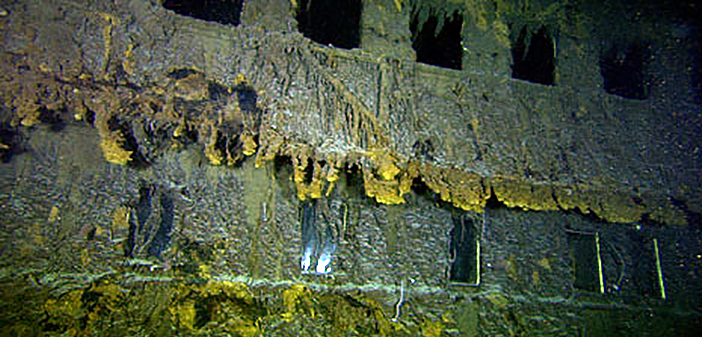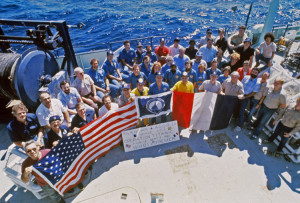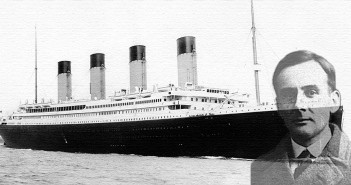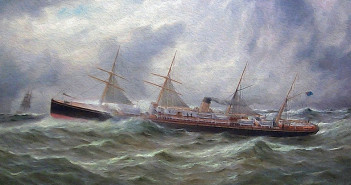On 1 September 1985, an expedition led by Robert Ballard of the Woods Hole Oceanographic Institution found the Titanic wreck lying approximately 400 miles east of Newfoundland, thereby putting to rest several decade’s worth of theories and speculation about the doomed liner’s final resting place. The discovery also squelched some of the crazier schemes proposed by various Titanic fans and headline seekers (including the idea that the liner could somehow be refloated and towed back to port).
For many ocean liner enthusiasts, the wreck’s discovery created a sense of closure. For decades, Titanic seemed almost more mythical than actual; a story told and retold without any tangible proof of its reality. Then, suddenly, we could actually view the wreck on our TV sets (in color). For many of us, seeing the liner’s crow’s nest was literally spine chilling. Poignant views of personal effects strewn across the ocean floor—the “debris field”—were heartbreaking
The wreck would also answer questions that had been hotly debated for decades, such as, “Did the liner’s aft section really break off as the liner took her final plunge?” (It did.)
Some people felt that interest in Titanic would quickly diminish after the ship’s discovery. As we all know, the exact opposite happened. Titanic continues to fascinate people worldwide.
After all, you’re reading about her right now.

Did you like this article? When you buy anything through the link below, Amazon will contribute a small amount to Oceanliners Magazine at no extra cost to you.
Shop Now






